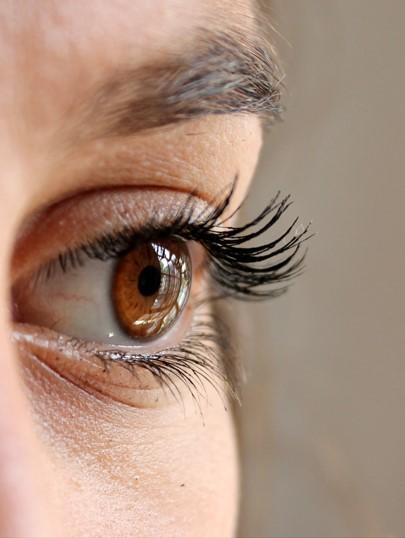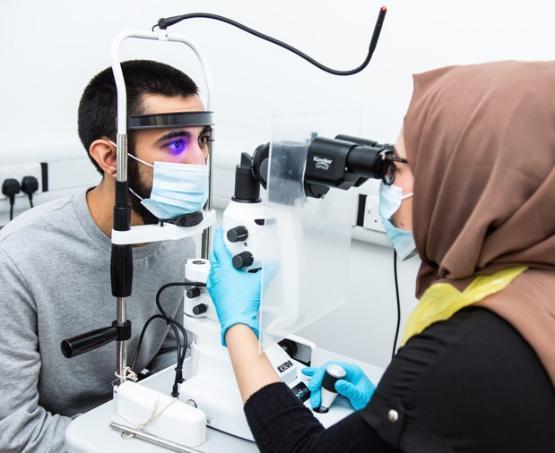Looking good: Optometrist gives tips on how to keep our eyes healthy

WINTER is a prime time for eye problems.
Bookings for sight tests tend to decrease, while concerns like short-sightedness – or myopia – and dry eye are more likely to arise.
Meanwhile, there has been a global rise in myopia. In the UK, one third of us is short-sighted, and the number of children with the condition has doubled in the last 50 years.
Writing in the Daily Mirror and Daily Express, Dr Neema Ghorbani Mojarrad, Assistant Professor in Optometry at the University of Bradford, gives eight simple tips we can all do to keep our eyes - and our children’s eyes - in tip top condition.
Plus he explains when to seek help.
Get outdoors
“There is consistent evidence to show that more time spent outdoors helps reduce the risk of becoming short-sighted. Scientists believe the likely reasons are increased light or being in a more visually stimulating environment, in which we are constantly focusing on a variety of different colours, textures and distances.
“Myopia mostly starts in childhood or adolescence, but one in 10 adults will also become myopic.”
Go wild with decoration
“If you work at a desk, the likelihood is, you will spend much of your time staring at the same walls. But you can replicate some of the variety of the natural world indoors by creating a more diverse and visually stimulating environment. One study in China is looking into whether painting classrooms to look like the natural world might affect children’s visual development. Whatever the results concerning their vision, initial findings have shown that children and teachers have reported increased happiness and positivity.”

Pictured above: Dr Ghorbani Mojarrad
Use the 20-20-20 rule
“As a rule of thumb, if you’re working at a screen, you should look away every 20 minutes, to an approximate distance of 20 feet, for 20 seconds. This applies to any kind of close work including reading a book and scrolling your phone. Doing this will lessen the strain on your eyes and force you to have a ‘blink break,’ which is important to keep your eyes lubricated and refreshed. Studies show our normal blink rate is about 15 blinks a minute, but when working at a screen, it can be as few as two per minute, leading to eye exposure, where parts of your eye are left without tear coverage, causing dryness.”
Take vitamin D
“The NHS recommends we should all be taking vitamin D supplements during the winter months, when we are exposed to less sunlight. It not only helps keep our bones, teeth and muscles healthy, but it could also reduce the risk of conditions like macular degeneration - when part of the retina is damaged - and dry eye.”
Wear polarised sunglasses

“Don’t ditch the sunglasses just because it’s winter. Anyone who skis or snowboards knows how useful polarised sunglasses are in reducing glare from the snow. But you might want to wear them while driving in the winter too, when glare can come from wet roads and the low sun. Make sure your glasses offer UV protection, as most polarised ones do, which can help prevent against cataracts and long-term damage to your eyes.”
Stub it out
“Smoking is the biggest modifiable factor in age-related macular degeneration, which is where the central part of your vision deteriorates, making everyday activities like reading, watching TV, driving and even recognising faces difficult.”
Don’t avoid wearing your glasses
“There is a common myth that people think wearing glasses is a slippery slope and that once you have them, your eyes become worse or reliant on them. They then try to avoid or restrict wearing their spectacles, or use a lower prescription or older pair of glasses. But, under-correcting your prescription has been scientifically shown to make your vision worse in trials, and so it’s not recommended.”
See an optician regularly.

Pictured above: The University of Bradford's eye clinic
“Children under 16 and adults over 70 should have an eye test every year. These tests are free.
Those aged 17 to 69 should have a routine eye test every two years. Eye tests not only look at your vision and eye health, but they can give an early indication of other health issues, such as diabetes, high blood pressure, high cholesterol and more. Some adults are entitled to free NHS eye tests, including those with diabetes and those over 40 with a close family member with glaucoma. You can find out if you are entitled for a free eye test and optical vouchers here.
When to seek help:
Dr Ghorbani Mojarrad said: “There’s a useful saying in optometry that if your eyes don’t look good, feel good or see good, you should get checked.
“If they look red and unhealthy in the mirror, or they feel irritated or painful, these could be signs of an infection or inflammation.
“Swelling around the eye area might also indicate an infection.
“And, of course, if there are changes in your vision, then you need an eye test to find out what’s causing that. Many people don’t realise that, in most cases, if you have a sudden problem with your eyes, then instead of going to your GP, you can call your local optician and they should be able to get you an appointment quickly, completely free of charge with a local eyecare scheme.”
What is myopia and why is it increasing?
Dr Ghorbani Mojarrad said: “Short-sightedness is where objects are clear up close and objects at a distance are blurry. We are born slightly long-sighted - where the opposite occurs - and our eyes grow with us until the age of around six years old, when they are meant to stabilise. In myopia, the eye continues to grow longer than it should, which then means light focuses in front of the retina and causes blurry vision. Wearing glasses or contact lens will correct the vision but won’t stop the progression of myopia.
“Myopia poses greater risk of other conditions, such as retinal detachment – where the retina detaches from the back of the eye causing a curtain in your vision - and myopic maculopathy, which is similar to age-related macular degeneration, where the central part of your vision becomes distorted.
“Myopia rates have increased worldwide the more educated we have become, which could be down to spending more time indoors. There was an increase, for example, when the compulsory age of education rose from 15 to 16.
“Several studies have shown an increased rate of myopia following Covid, when we all spent a large proportion of our time indoors during lockdowns.
“We’re also doing a lot more near work now, not just on phones and computers, but reading books as well. All of these things can have an impact on our vision.”
Did you know?
Studies have shown that controlled exposure to red light has been shown to reduce myopia progression. This is now licenced in the UK and you should speak to your optician for advice.
In Denmark, a metabolite of caffeine known as 7-MX has been used as a supplement to slow the progression of myopia in children.
